Community Service Assignment Examining Maori Religion
Question
Task: The goal of this community service assignment is to provide you with an opportunity to develop an in-depth understanding about the quality and effectiveness of a particular welfare system or systems set up to promote the rights of, and address disadvantages faced by a particular group.
Answer
Introduction
As opined by Borkovskaya, (2018, p. 06025) Community Service defines the work done by a group of people or an individual person that benefits others. Generally, community service is often done where people live, such that people's community reaps the benefits of their work. Though a person doesn't get paid to perform community service, the person volunteers valuable time. It helps many different groups such as children, senior citizens, people who are disabled to do work, even animals and the environment. Community service can be organized through a local group such as non-profit organizations, schools, colleges, universities, and so on. Improving community service and conditions many people participate in community service and enjoy helping others. Hence, the Austronesian indigenous group named Maori religion described themselves friendly as well as reserved religion. Not only amiable but also respectful and open-minded, Maori religion encloses various beliefs and practices.

Figure: 1 Community service
Source (Mahuika, 2019)
Background
In the 14th century, Maori migrated from Hawaiki which is a mythical land. According to the archaeological discoveries, the origin of Maori is termed as the waves of migration which have dated about 1300 CE arrival to New Zealand. In 1840 the British assumed formal control of New Zealand. Some Maori leaders began demolishing the Bay of Islands and the other parts of the north and the war is called the First Maori war. After the king's movement, most of the Maori demanded increased land from the government. In the 19th century, Maori entered the parliament and reserved 120 seats in the New Zealand parliament. As opined by Mahuika,(2019), Maori belongs to the Christian religion with 54% and the no religion is 42% and few are maintained Islam and Hinduism.
Identification and description of the welfare system
Maori statistics design a figure of unemployment that is not satisfactory. As opined by Hameed,(2018), the general unemployment rate has been over 20%, which is a shocking factor. Generally, their population is increasing and their social problems, health care problems are also increasing. While acknowledging the existence of perplexed factors such as low education rates, deprivation of childhood government has decided to play some welfare schemes to prevent the social gap. It provides employment services that are performed by government services.
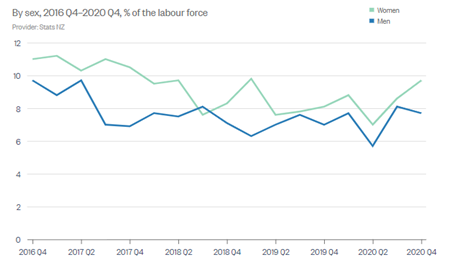
Figure 2: Identification and description of the welfare system
Source (Hameed, 2018)
These welfare systems can strengthen the group socially and economically. With the help of the Maori, Health Action plans 2020-2025 fair and sustainable services can be provided to the people. This action plan helps to improve their health and well beings. As opined by King,(2017), introducing the Whenua Maori program, the ministry of economic development increases the knowledge and skills of people who are landowners. It also generates wealth and strength the connection between the Maori and non-Maori groups. Maori business groups support helps new business plans and existing business plans, which helps in their economic prosperity. During the urbanization period, many Maori migrate from their rural places for the economic development of themselves. After the 19th century, the cabinets target the youth and hope that only changes can increase the social developments of Maori. As opined by Webb,(2017), due to unemployment, some youth commit suicide while others engage in criminal activities or get addicted to unsocial activities. Recently the concerned ministry has launched Young Urban Maori for the training of workers. The program is all about gaining qualification through apprenticeships and securing sustainable jobs with opportunities. It focuses on recruiting vulnerable juvenile people who did not get proper academic education and training. The Ministry of Employment invested 150,000AUD to work out the plan of employment and the Ministry of Health department has proposed to invest 200,000 AUD in the Maori Health Action plan.
Identify resources and support for the specific group that can be accessed within the relevant welfare system
In order to unique historical, political, social circumstances the health status of indigenous people varies from group to group. In the colonial history of New Zealand observe the disparities in the health system between Maoris and non-Maoris groups. As opined by Whaanga and Wehi, (2017), involving a complex mix of components associated with lifestyle factors and socioeconomic factors which are available in health care management and prevent discrimination among the people. The health care services of Maori are designed according to the values and social processes which affect the people's health. There are many differences between Maori and non-Maori groups. However, maintaining the disparities and differences of health care facilities has been recognized effectively. Improving health care facilities and quality Maoris highlighted two potential approaches.
Developing the system of Maori health care providers: Over the past decade, the number of Maori health providers has developed significantly, including medical, nursing, the community cares and health professional services many health providers apprehend specific contracts with other providers.
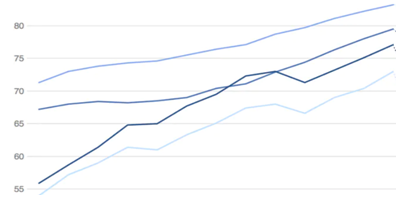
Fig 3: Trends in rising healthcare awareness among the Maori Population, with the passage of time
(Source: the conversation.com., 2017).
Initiate the cultural safety education: Launching cultural safety education it is important to implement interpersonal and intellectual learning from childhood primary education. However, intellectual improvement and cognitive development do not come from generic literacy skills. Generally, it comes from participating in particular literacy practices such as cooperation in social activities.
Through the social welfare system, the government has recognized the unemployment problems. As opined by Stephens (2017), before 1951, Maori were not included in census unemployment data. However, over the past few decades, the rate of unemployment has been consistently increasing rather than the other groups. Overall, the Maori unemployment rate is 10.8 percent, and the youth unemployment rate is 20.4 percent, with the women's unemployment rate is 12%.
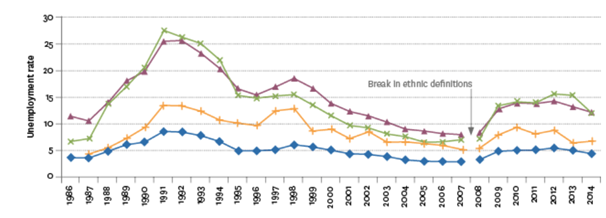
Fig 4: trends in unemployment among the Maori tribe as well as youth and women unemployment rates, through the years
(Source: socialreport.msd.govt.nz., 2021)
Whenua Maori program: Requiring fresh thinking and having the courage to take challenges to understand the needs of Maori landowners to direct the changes. It has been faced with the challenge to implement the program and there creates complexities among landowners when demanding to engage with their Whenua. Fixing these problems, the commission spent time listening to Maori freehold landowners. The commission also discovers and defines the needs and aspirations of the landowners. Securing the funding for the Whenua Maori program, the cabinet approves the solution of the business case and forming a team to assure the commercial relationship for the benefits of Maori. Young Urban Maori:The youth development program targets the young generations who are in the 15 to 18 age group with low efficiency. It provides training in such a unique style. The program was conducted in different phases. At first, the participants participate in storytelling interviews and creative imagination in reality television. The result of the program shows satisfactory and positive outcomes. The research proves that teamwork and fun produce positive energy towards the work. Applying such a workshop the commission increased the efficiency of the workers who did not have academic qualifications.
Drawing on relevant research evidence and inquiry, evaluate the quality and effectiveness of the system and services provided by the group.
It is clear that to strengthen the Maori community's official guidance, it needs to undertake performance measurement. As opined byWare, Breheny, & Forster (2017), implementing better public services the government aims to emphasize the results that related to public service activities. There is an equitable need to monitor the performance and wellbeing of Maori. The community Maori have different types of needs, beliefs, and views. According to Paine, & Gander, (2016), the importance of engaging Maori consumers to better explain Maori consumer needs and aspirations.
The Maori Welfare programmeshave been able to improve the living conditions of the Maori population within mainland Australia. According to Stephens, (2017), the health outcomes, living conditions as well as employment rates have all been positively affected within the Maori population, owing to the welfare programs.The total rate of people appearing from the benefit of the system into employment is calculated and compared to the exit rate for Maori people, in order to conclude on the efficacy of the welfare programs implemented within the systems. It can provide helpful information and concentrate on comparative measurement. As stated byHobbs et al., (2019), the welfare programs implemented have helped in improving the living conditions of the Maori tribe by about 45% while making the feel more accepted and valued within the society and reducing discrimination made against the individuals belonging to this population group.
As per the present research of Mahuika, (2019), it is shown that utilizing the welfare system of youth urban Maori the employment percentage increases 5% to 10%. Not only the rate increased but also the lifestyle of Maori people has changed effectively and the disposable income of the population has enhanced by around 20% in the Australian context, since the last decade (socialreport.msd.govt.nz., 2021). The approachability of the Maori population in case of availing the healthcare systems has also significantly increased and in some cases, owing to the welfare systems which has arranged for separate provisions for treatments of the Maori population, the population has grown to trust the Australian medical systems and abide the norms.
As opined by Smith et al., (2016), the specific measurements aim to assess performance against Maori regulations. It might ascertain to capture outcomes at the level of collectives rather than individuals. The Maori clients, the clients of whanau, and the service provider capture the individual perspectives and give a strong perspective of what the service has performed. The welfare systems has also aided the Maori population to improve their awareness and education levels and around 79% of the Maori population that had been admitted to institutions have completed their degrees. Furthermore, according to Arahanga-Doyle et al., (2019), the training arrangements made for training the Maori youth, who have not completed their school education, have helped in enhancing their skillset and have made them 45% more capable to seek employment within the Australian context. Working for establishment of commercial relationship with the Maori, for their own benefits, have helped Maori landowners to have better and stronger say in the way their lands are utilized and the benefits that they are able to accrue from the same (www.tpk.govt.nz., 2021).
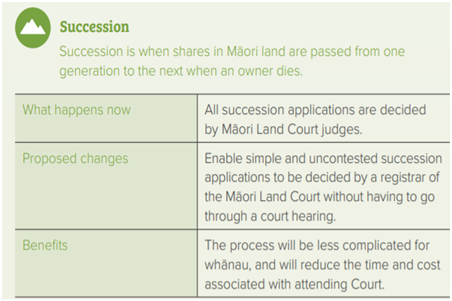
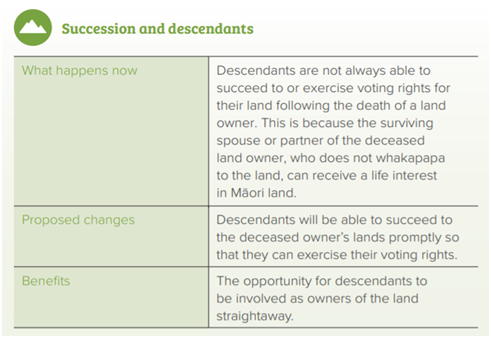
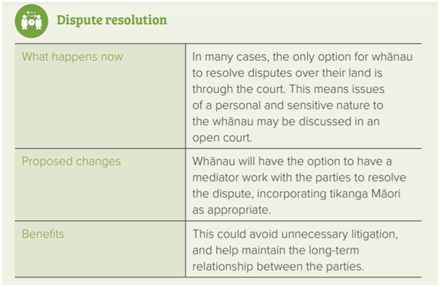
Fig 5: Outcomes of the welfare programmes
(Source: www.tpk.govt.nz., 2021)
Measuring the effectiveness of the system and services Maori community has appeared many barriers to implement the new welfare systems.As stated by Metcalfe et al., (2020), performance effectiveness for Maori can be highly politicized. Lack of good quality of information on Maori people and strong analysis of authentic data can be impeded. Overcoming obstacles commission requires to establish the right technical and policy capability. It also exercises strong leadership and builds an organizational culture that supports the Maori perspectives.
Identify and consider how sources of funding impact on quality of service delivery
The health care system of Australia is comprehensive and largely publicly entrusted. There are significant inequalities to access the health facility system. According toCunningham et al., (2020), the life expectancy of that region is about 82 years below the OECD average of 80 years. It is observed that the life expectancy of Maori people is lower than the average. Considering health issues such as cancers, cardiovascular diseases, dementia, injuries, the government invested new funding in the health budget to play a significant role. Day by day high rates of suicide have been increased in Maori due to lack of awareness regarding the health issues. Maori Health Action Plan mainly focuses on the mental health of young people as well as senior citizens. As opined by Cram, Pipi, & Paipa, (2018), Maori health issues are responsible for Maori people. Inequalities and unfairness are shown in their health system. Poor housing, low incomes, and lack education cause ill health. Observing poor health conditions, the government recommended an authority named Maori Health Authority which reported to the commission annually and possessed the funding of about 300 GBP. The authority can provide health services including proper treatment, medicine in free of cost, primary medical facilities, and so on within time.
As opined by Reid et al, (2017), the unemployment rate is the common indicator for measuring the conditions of the labor market. The labor market generally consists of gender-based groups and ethnic groups. In the Maori community, the women people even do not understand the importance of education. As a result, the unemployment rate rises day by day. Improving the welfare of women, the government takes initiatives to develop the economic as well as social conditions of women. Implementing the practices, the Ministry of Labour management invest approximately 400 GBP for the women's training purposes. As per the above study, the young urban Maori program provides training to the under-educated people such that the people can elaborate themselves and amplify their lifestyle compared to the other people. Utilizing the schemes. According to Kennedy, (2017), youth are the future of any nation. Life cannot be extended without a better economy. However, at present Maori have widened their outlooks and developed lifestyles adopting the welfare systems.
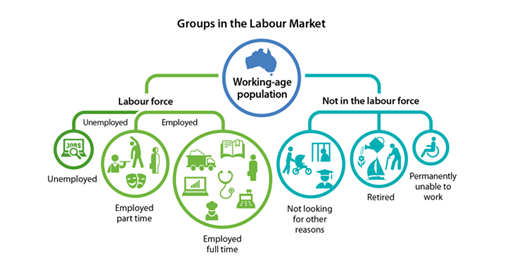
Figure 6: Funding impact on quality-of-service delivery
(Source: Kennedy, 2017)
Conclusion
The process of economic and communal change generates new prospects and new ventures for every generation. On the part of social services, it requires constant adjustments for the social services. Communal and social work goes through a natural process. Achieving the goals of social service activities Maori develops themselves utilizing many programs. Recognizing the beliefs and values of the youngers as well as workers need to be knowledgeable and create new opportunities for the social and economic development of Maori communities Hence, the approaches of developing Maori communal implementing welfare activities makes a remarkable change to their social conditions.
References
Arahanga-Doyle, H., Moradi, S., Brown, K., Neha, T., Hunter, J. A., & Scarf, D. (2019). Positive youth development in M?ori and New Zealand European adolescents through an adventure education programme. K?tuitui: New Zealand Journal of Social Sciences Online, 14(1), 38-51.
Borkovskaya, V. (2018). Project management risks in the sphere of housing and communal services. In MATEC Web of Conferences (Vol. 251, p. 06025). EDP Sciences.
Cram, F., Pipi, K., & Paipa, K. (2018). Kaupapa M?ori evaluation in Aotearoa New Zealand. New directions for evaluation, 2018(159), 63-77.
Hameed, M. A. (2018). Challenges and opportunities for innovation in child abuse and neglect research within the child welfare system in Australia. Children Australia, 43(1), 57.
Hobbs, M., Ahuriri-Driscoll, A., Marek, L., Campbell, M., Tomintz, M., & Kingham, S. (2019). Reducing health inequity for M?ori people in New Zealand. The Lancet, 394(10209), 1613-1614.
Kennedy, M. (2017). Maori economic inequality: reading outside our comfort zone. Interventions, 19(7), 1011-1025.
King, D. (2017). How M?ori precariat wh?nau navigate social services: a thesis presented in partial fulfilment of the requirements for a Master of Arts in Psychology at Massey University, New Zealand (Doctoral dissertation, Massey University).
Lacey, C., Cunningham, R., Rijnberg, V., Manuel, J., Clark, M. T. R., Keelan, K., ... & Jordan, J. (2020). Eating disorders in New Zealand: Implications for M?ori and health service delivery. International Journal of Eating Disorders, 53(12), 1974-1982.
Mahuika, N. (2019). A brief history of whakapapa: M?ori approaches to genealogy. Genealogy, 3(2), 32.
Metcalfe, L. K., Krishnan, M., Turner, N., Yaghootkar, H., Merry, T. L., Dewes, O., ... & Murphy, R. (2020). The M?ori and Pacific specific CREBRF variant and adult height. International Journal of Obesity, 44(3), 748-752.
Paine, S. J., & Gander, P. H. (2016). Explaining ethnic inequities in sleep duration: a cross-sectional survey of M?ori and non-M?ori adults in New Zealand. Sleep health, 2(2), 109-115.
Reid, M. J., Paine, S. J., Curtis, E., Jones, R., Anderson, A., Willing, E., & Harwood, M. (2017). Achieving health equity in Aotearoa: strengthening responsiveness to M?ori in health research.
Smith, L. T., Maxwell, T. K., Puke, H., & Temara, P. (2016). Indigenous knowledge, methodology and mayhem: What is the role of methodology in producing Indigenous insights? A discussion from m?tauranga M?ori.
socialreport.msd.govt.nz., (2021). Unemployment: The Social Report 2016 – Te p?rongo oranga tangata. Retrieved 28 April 2021, from https://socialreport.msd.govt.nz/paid-work/unemployment.html
Stephens, M. (2017). “A useful and self-respecting citizenship”–M?ori as citizens in the quest for welfare in the Modern New Zealand state. In Citizenship in Transnational Perspective (pp. 189-208). Palgrave Macmillan, Cham.
the conversation.com., (2017). New Zealand’s health service performs well, but inequities remain high. Retrieved 28 April 2021, from https://theconversation.com/new-zealands-health-service-performs-well-but-inequities-remain-high-82648
Ware, F., Breheny, M., & Forster, M. (2017). The politics of government ‘support’in Aotearoa/New Zealand: Reinforcing and reproducing the poor citizenship of young M?ori parents. Critical Social Policy, 37(4), 499-519.
Webb, R. (2017). M?ori experiences of colonisation and M?ori criminology. In The Palgrave handbook of Australian and New Zealand criminology, crime and justice (pp. 683-696). Palgrave Macmillan, Cham.
Whaanga, H., & Wehi, P. (2017). R?hui and conservation? M?ori voices in the nineteenth century niupepa M?ori. Journal of the Royal Society of New Zealand, 47(1), 100-106. www.tpk.govt.nz., (2021). Whenua M?ori Programme Targeted amendments to Te Ture Whenua Maori Act 1993. Available at: www.tpk.govt.nz/












